Last Chance to Catch NYC's Holiday Notalgia Train
We met the voices of the NYC subway on our nostalgia ride this weekend!

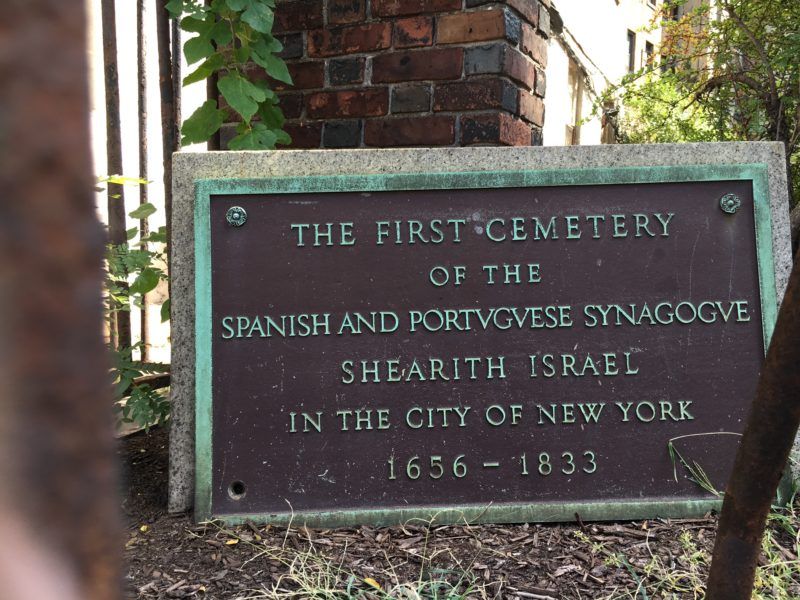
A plaque sitting at the entrance of the first Shearith Israel Cemetery on St. Jame’s Place in Lower Manhattan. Photo by Justin Rivers.
On September 12, 1654 the first Rosh Hashanah services in the North America were held in New Amsterdam.
That’s right we’re headed back to the Stuyvesant administration for this week’s column. Although Stuyvesant’s heavy hand kept New Amsterdam on the historic map, he also had a darker side: bigoted xenophobia to be exact. He didn’t like the native populations of the area, he didn’t like Catholics and he certainly didn’t like Jews. It must have horrified him to hear the reputed 18 languages spoken on the streets of New Amsterdam in the year 1654. In fact the Dutch were a minority in their own city.
You could imagine Peg Leg Pete’s double horror when a ship of 23 Sephardic Jews escaping the Portuguese Inquisition in Pernambuco (now Recife) Brazil sailed into New Amsterdam looking to lay down roots. For Stuyvesant, the trouble actually started on August 22 when a Dutch ship called the Pereboom (Pear Tree) brought an Akskenazi man by the name of Jacob bar Simon into New Amsterdam. Stuyvesant couldn’t draft the petition fast enough to order the expulsion of all Jews from his colony. He pleaded with the Dutch West India Company that “none of the Jewish nation be permitted to infest New Netherland.”
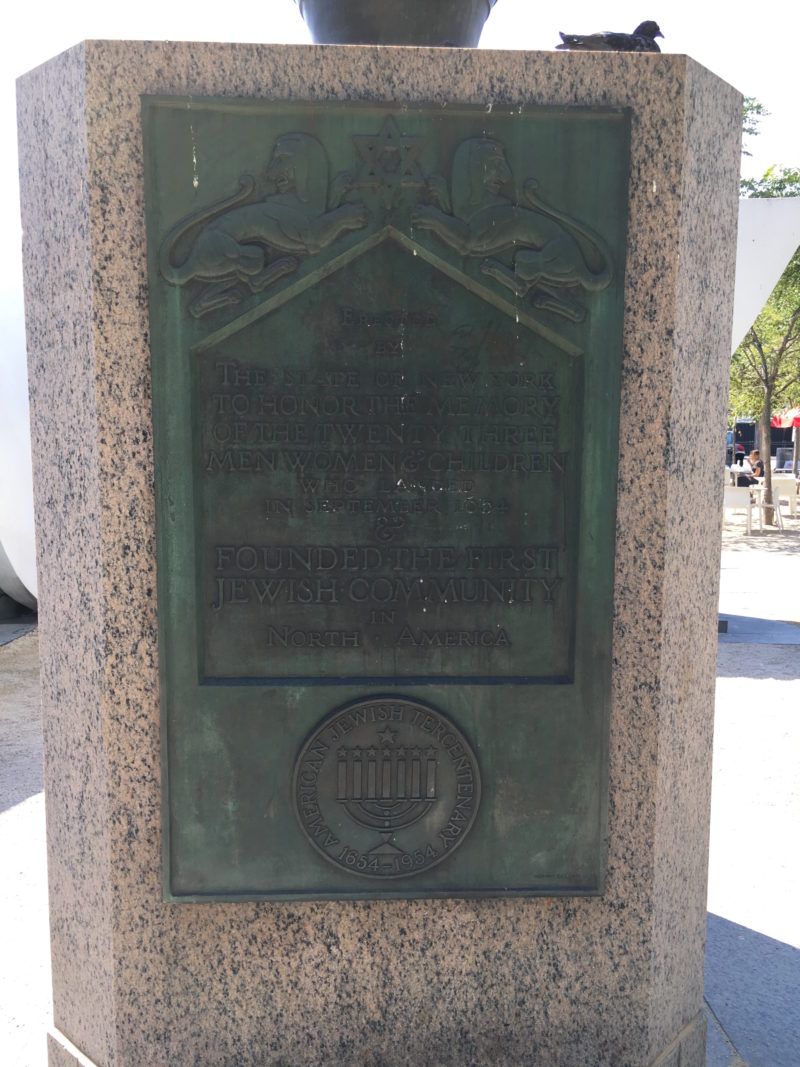
The base of a flag pole on Peter Minuet Plaza erected in 1954 to commemorate the first Jewish community in the North America. Also a stop on Untapped Cities’ Remnants of Dutch New Amsterdam: Tracing the Castello Plan Tour. Photo by Justin Rivers.
The group of Sephardic refugees quickly sent a counter petition asking Stuyvesant’s superiors, “That your Honors be pleased not to exclude but grant the Jewish nation passage to and residence in that country; otherwise this would result in a great prejudice to their reputation.” They went on to ask that “the Jewish nation be permitted to travel, live and traffic there, and enjoy liberty on condition of contributing like others.”
Stuyvesant, thinking he had this request in the bag, was thrice horrified to find that his petition was thrown out by the home office. They chided their Director General reminding him that he was running a company town not a “city on the hill” like those Puritanical killjoys to the north. They told him that no one should be turned away because of their religious beliefs. Also quite a few investors in the Dutch West India company were wealthy Jewish men…so there was that to consider as well.
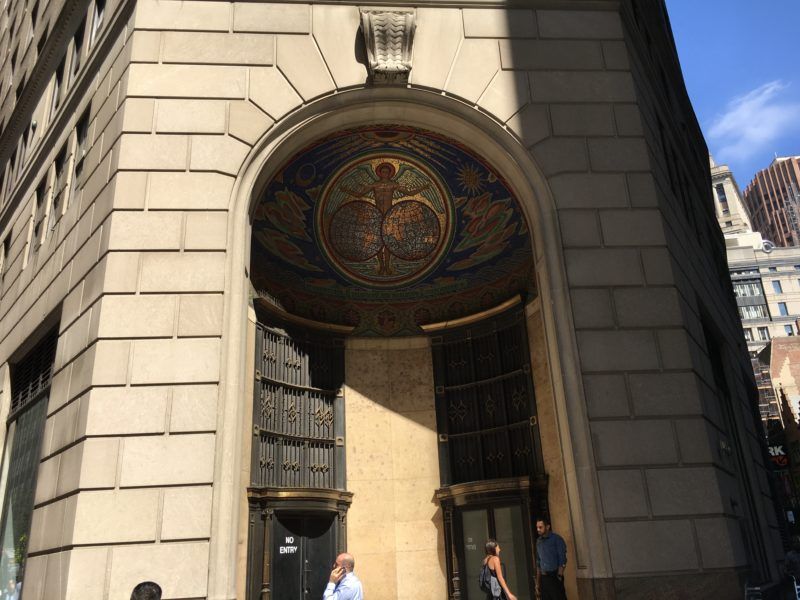
The corner of Broad Street and South William where it was said the first North American Rosh Hashanah took place in a private home. Shearith Israel’s first temple would go on to be located on South William until the 1700’s. Today the International Telephone and Telegraph (ITT) Building sits on the site. Photo by Justin Rivers.
In a later company policy stemming from Stuyvesant’s petition, the Dutch West India built the foundation for New York’s tradition of multicultural tolerance:
“The consciences of men ought to be free and unshackled, so long as they continue moderate, peaceable, inoffensive and not hostile government. Such have been the maxims of toleration by which this city has been governed; and the result has been, that the oppressed and persecuted from every country have found among us asylum from distress. Follow in the same footsteps and you shall be blessed.”
On September 12, 1654, amid the dueling petitions, a Rosh Hashanah service was held in a private house on the corner of Broad and Mill Street (now South William Street). It was the start of Shearith Israel (Remnant of Israel). It was the only Jewish congregation in New York until 1825 and is the oldest existing Jewish congregation in the North America.
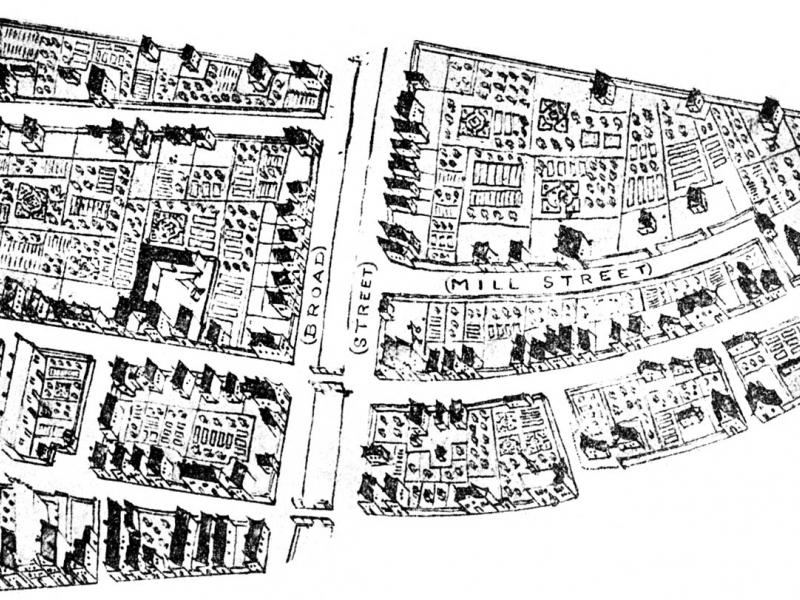
A map of New Amsterdam circa 1654. The first Rosh Hashanah took place at a private residence on the corner of Broad Street (then a canal) and Mill Street (now South William Street). Source: Shearith Isreal
Although Shearith Israel’s temple is now up on Central Park West, there a few traces of the historic congregation downtown including a commemorative flag pole in Peter Minuet Plaza and the burial ground of those 23 founding Shearith Israel members now locked away and all but forgotten on St. Jame’s Place and Oliver Street.
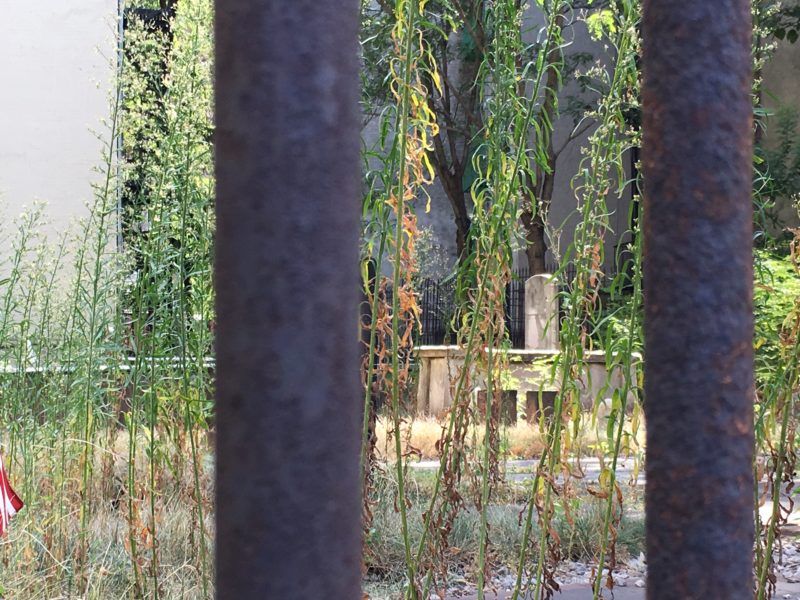
The first Cemetery of Shearith Israel on St. James Place. The area is locked and appears to have been neglected for some time. Photo by Justin Rivers.
You can hear much more about Peter Stuyvesant, Shearith Israel and see some of these sites up close on our Remnants of Dutch New Amsterdam: Tracing the Castello Plan tour.
Subscribe to our newsletter